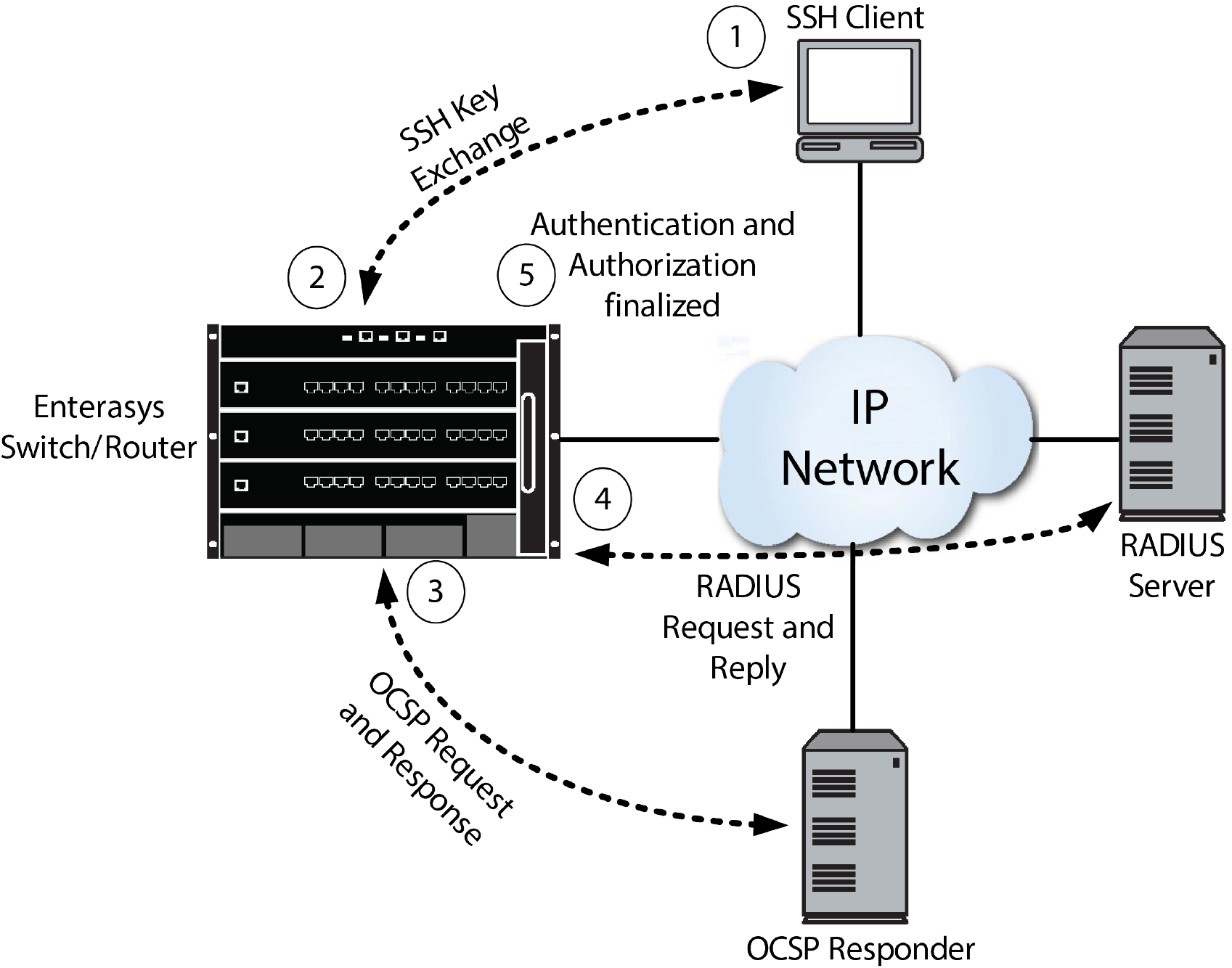The S- and K-Series PKI implementation supports the secure authentication of an SSH client to an Extreme Networks S- and K-Series device using an X.509 certificate and authorization using RADIUS, TACACS, or local policy.
There are three primary aspects to PKI configuration:

Note
The SSH server must be configured for SSH client authentication using PKI. See Configuring Secure Shell for SSH server authentication configuration details.There are no PKI MIB objects. PKI is exclusively managed by the CLI. CLI users with admin access (su) can set, show and clear all of the PKI configuration objects. Users with read-only (ro) or read-write (rw) access are restricted to displaying show commands.
The following figure presents a PKI login flow overview in a RADIUS server authorization context.

Callout 1 is the initial series of message exchanges initiated by the SSH client. The S- or K-Series device providing the SSH client with the list of supported authentication methods one of which is public key. The SSH client responds with its public key certificate.
At Callout 2, the S- or K-Series device checks to make sure the certificate signature from SSH client matches a trusted certificate authority‘s certificate defined in PKI certificate authority list on the S- or K-Series SSH server.
At Callout 3, the S- or K-Series device sends an OCSP request that contains the Client‘s certificate serial number to the OCSP responder to check the validity of the Clients X.509 certificate, and the OCSP Responder uses the serial number to look up the revocation status of the SSH client‘s certificate. If the OCSP responder determines that the certificate has not been revoked by the certificate authority, the server sends back a GOOD response. The responder certificate is an OCSP signing certificate issued by the CA that issued the certificate that is being validated. Supported certificates are common issuer, Delegated Trust Model (DTM), and Trusted Responder Model (TRM) as defined in FRC 5280. When using TRM, use the set pki ocsp signature-ca-list command to specify the trusted list. Lists are created using the set pki certificate command.
At Callout 4, the S- or K-Series device queries the setting of the PKI authorization user name and potentially prompts for the RADIUS password. These values will be used to verify the Authorization of the SSH client‘s user.
At Callout 5, Radius Authorization is configured on the S- or K-Series device. The resulting Radius Access Request contains the appropriate username and password. Radius Server sends Access-Accept message and the SSH client is now both authenticated (PKI) and authorized (RADIUS) and SSH negotiates a PTY and a shell to use for the user login session.

 Print
this page
Print
this page Email this topic
Email this topic Feedback
Feedback